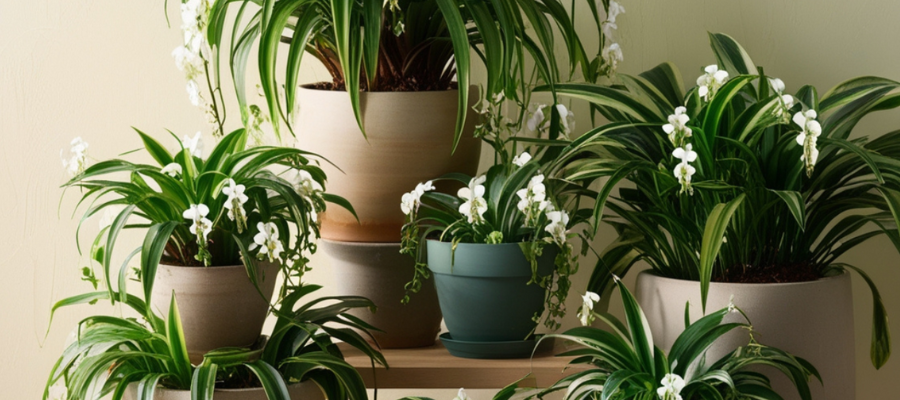Spider Plant Care Tips for Beginners

Spider plants are among the most cherished houseplants, beloved for their air-purifying properties and simple maintenance. Ideal for novice gardeners, these plants feature graceful, arching leaves and charming plantlets that hang like miniature spiders, adding a touch of elegance and vibrancy to any space.
Understanding the Spider Plant
Characteristics of the Spider Plant
Spider plants are known for their long, slender, arching leaves that typically feature green and white stripes. They produce small white flowers on extended stems, which eventually develop into tiny plantlets, often called “spiderettes.” These spiderettes can be easily propagated to grow new plants. The lush and vibrant foliage of spider plants makes them a visual delight and a popular choice for indoor greenery.
Benefits of Having a Spider Plant
Spider vegetation provide extra than just visible enchantment; they’re also effective air purifiers. By absorbing pollutants like formaldehyde and carbon monoxide, they assist create a healthier indoor environment. Their low-maintenance nature makes them an remarkable preference for busy people or those new to plant care. Additionally, their resilience and ability to thrive in a number of situations make spider flora a versatile and sturdy addition to any domestic.
Basic Care Tips for Spider Plants

water supply requirements
This spider tree grows in extremely cold conditions. If the topsoil is dry, it should be watered. Be careful about overwatering, as it can cause root rot—make sure your pot drains well. Symptoms of overwatering include yellowing of leaves and damp soil. In contrast, we can say that the underwater fabric code shows in blue. Using well-drained soil is essential to protecting your shark’s health.
Light Preferences
Spider plants thrive in bright, indirect light. Direct sunlight can scorch their leaves, while too little light might stunt their growth. During darker winter months, consider moving your plant closer to a window. A spot that gets indirect sunlight most of the day is perfect.
temperature and humidity requirements
Spiders thrive in temperatures between 65-75°F. They can tolerate some changes, but avoid exposure to temperatures below 50°F. They also prefer moderate temperatures but have adapted to lower temperatures. If your home is particularly dry, water the plants occasionally or use a humidifier tray to keep them moist.
Common Issues and Solutions

Insects and Diseases
Spider flowers are immune to insects however can every now and then appeal to spider mites and mosquitoes. If you spot small insects or wings, wipe the leaves with a humid material or spray with an insecticidal cleaning soap. Root rot, regularly due to over-watering, may be averted via ensuring adequate drainage and keeping off waterlogged soils.
Leaves discolored and brownish
Yellow or brown leaves can be a sign that something is wrong. Yellowing usually indicates excessive levels of water, while brown tips from fluoride or chlorine in tap water can occur. Using distilled or filtered water can help prevent this. Too many nuts can also cause browning, so be sure to give your plants a balanced dose of fertilizer each month.
Conclusion
Spider plants are a rewarding choice for any beginner. With their striking appearance and minimal care needs, they bring a refreshing touch of nature into your space. Follow the tips in this guide, and your spider